The following is a guest post by Bobby Kittleberger of GuitarChalk.com. If you are interested in guest posting, please contact me!
In this hypothetical pedalboard build, I’m using the Guitar Chalk pedalboard planner app to properly place and sequence a collection of guitar pedals with a focus on placing an overdrive pedal, specifically. This might be helpful for someone who wants to put a modest gain source in front of a high-quality tube amp for some added distortion boost.
This shows what a pedal chain order might look like, assuming you want to feature and position an overdrive pedal in its most effective spot.
To follow along, or just build your own board, you can access the pedalboard planner app here.
Keep in mind, the gear I’m using in the app is fairly close to scale, meaning the dimensions are available for each pedalboard and pedal and are set in relation to one another within the app. In other words, three five-inch deep pedals would fill up 15†deep board.
For reference, here’s a look at the board and pedals I’ll use:
- Pedaltrain Nano Plus
- Boss SD-1 Super Overdrive
- EarthQuaker Devices Sea Machine Chorus
- Boss PH-3 Phase Shifter
- Strymon Blue Sky Reverb
- Boss Waza Craft Analog Delay
First, I’ll setup my pedalboard in the app and consider its dimensions. For this build I’m using the Pedaltrain Nano+ which is a narrow board that allows us to setup a linear pedal chain. Per the Pedaltrain website, this board is roughly 18 inches wide and five inches deep.
Pedaltrain Nano+ dimensions and weight. Image via Pedaltrain (View Larger Image)
Here’s what the Nano+ looks like in the pedalboard planner app:
Starting with the Pedaltrain Nano+ pedalboard. (View Larger Image)
Typically, compression and volume pedals are the first effects to come after your guitar in a signal chain. From there we would go to filter or pitch effects and then distortion.
- Volume
- Compression
- Filter/Pitch (wah usually)
- Distortion
Starting with Distortion
In a build that omits volume, compression and pitch-related effects, the Boss SD-1 – our token overdrive pedal – will go first in the signal chain coming out of the guitar.
From our list, the overdrive pedal goes first. (View Larger Image)
From there we should be looking for anything in our list that would fall under the category of modulation, which in our example would be a phaser and chorus pedal. The gain increases from the SD-1 will now run through the modulation. In other words, we want to be modulating gain instead of increasing the gain of our modulation.
Any modulation effects should be placed after your overdrive pedal. (View Larger Image)
We want to be modulating gain instead of increasing the gain of our modulation.
Following conventional signal chain wisdom, we end the path by adding pedals that would be considered ambient. Ambient effects include anything that manipulates time, primarily delay, echo and reverb. If you recall our list we had two such pedals picked out; the Strymon reverb and Boss Waza Craft analog delay.
Ambient effects at the end of our signal chain. (View Larger Image)
Personally, I’d rather have delay before reverb, so you get the echoing mix figured out before you send it into what is a subtler – less intense – manipulation of your signal. However, the difference in how you place effects within a single category is far less impactful.
The same goes for modulation effects, where I’ve placed my phaser pedal in front of the chorus. Switching them up would be of little consequence.
Let’s look at a couple more hypothetical scenarios with this board.
Adding a Second Distortion Pedal, Filter Effect and an Effects Loop
I’ll add a second distortion pedal with a more involved EQ system and higher gain options, as well as an envelope filter, both replacing an ambient and modulation effect. I’ll also assume (just to make it more interesting) that we’re now working with an effects loop.
Per Strymon’s recommendation, let’s take a look at a typical signal chain order when throwing your pedalboard into an effects loop:
Effects order in a signal chain with an effects loop. (View Larger Image)
The pedalboard will look similar, though we’ll need to make sure all ambient effects are placed inside the effects loop. The rest of our pedals will stay directly between the guitar and amp.
Let’s start by adding the two new pedals.
Replacing the phaser and delay. (View Larger Image)
I’ve taken out the Boss phaser and delay, swapping them out for a heavier distortion and the Keeley envelope filter. However, I don’t want to directly swap them, given the recommended signal chain order. Instead, we’ll bump the filter to the front of the path and put the SD-1 behind the heavier distortion since it can function more as a preamp for my pedal line.
Shifting the order to get the filter effect in front. (View Larger Image)
That distortion pedal is the AmpTweaker Tight Metal Jr, which is a robust enough distortion pedal to be used as its own preamp. Putting one of these in front of your overdrive gives you more power on the front end of your EQ, while the Keeley Neutrino functions as a kind of hi or lo pass filter on a mixer channel, meaning it should come first in our signal path.
The following graphic is the same, but with some labeling that further explains the process:
Labeling the effects order by category. (View Larger Image)
Pedal Chain Order Takeaways with an Overdrive Pedal
Understanding what happens to an electric guitar signal is often difficult and lacking any concrete explanation. You really have to place your own collection of effects before figuring out what your best practices are going to be. Even then you’re relying on broad conventional wisdom.
However, there are a few things we can takeaway, even from hypothetical pedalboard builds.
- OVERDRIVE EFFECTS SHOULD COME AFTER FILTERS BUT BEFORE MODULATION
Not only overdrive, but any pedal that changes the gain of your signal should be placed after your filter effects. Following gain would be modulation, including phaser, chorus, flanger and tremolo. This way gain amplifies a pre-EQ’d tone and modulation layers the entirety of the signal (all the gain).
- YOU CAN USE MORE THAN ONE Gain Source IN YOUR SIGNAL CHAIN
Most guitarists who use multiple gain sources get at least one of those sources directly from their amplifier, though in our second example we used a distortion pedal to serve as a preamp that was placed before our overdrive. The overdrive then served as a booster for the first pedal.
- EFFECTS WITHIN A CATEGORY ARE GENERALLY INTERCHANGEABLE WITHIN THAT CATEGORY
It doesn’t drastically impact your tone if you mix up effects within a single category. For example, the ambient effects – reverb, echo and delay – can be arranged among themselves without significant audible consequence.
Conclusion
Pedal chain order advice has an element of subjectivity. Because it’s really hard to give good answers without knowing the context of a particular guitar rig or pedalboard. That’s why it can be helpful to use something like a pedalboard planner to visualize a board, even if it’s just a hypothetical setup.
The Guitar Chalk Pedalboard Planner is free and easy to use, so check it out and build a few of your own board ideas.
If you have questions about this setup or about using overdrive in a signal chain, leave them in the comments section below and I’ll do my best to answer.


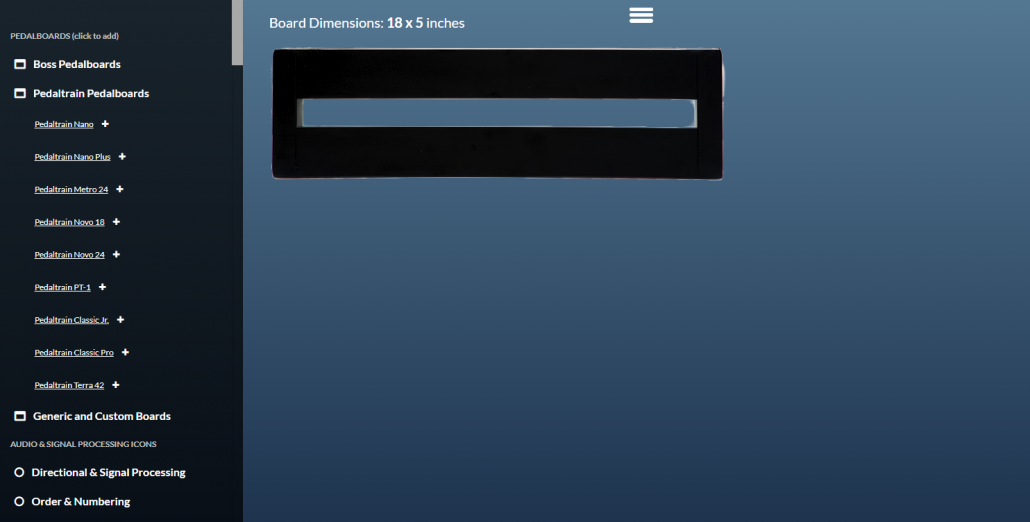
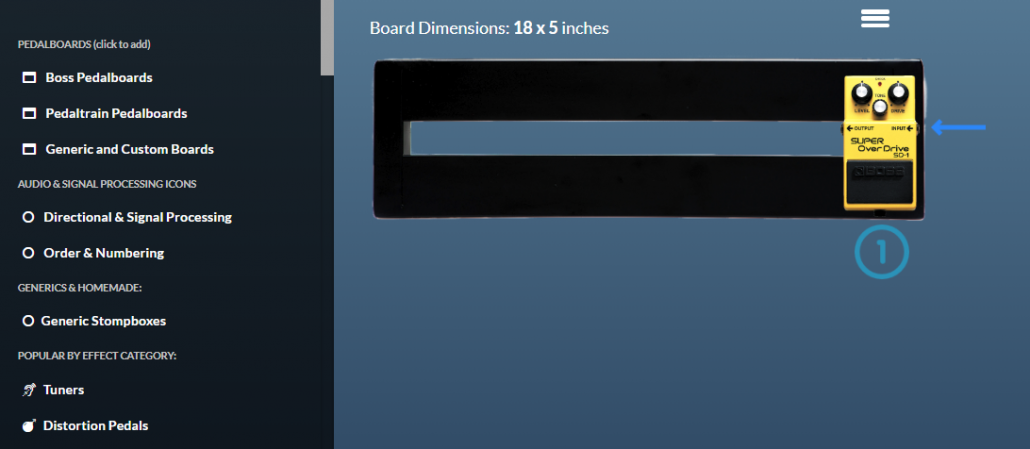
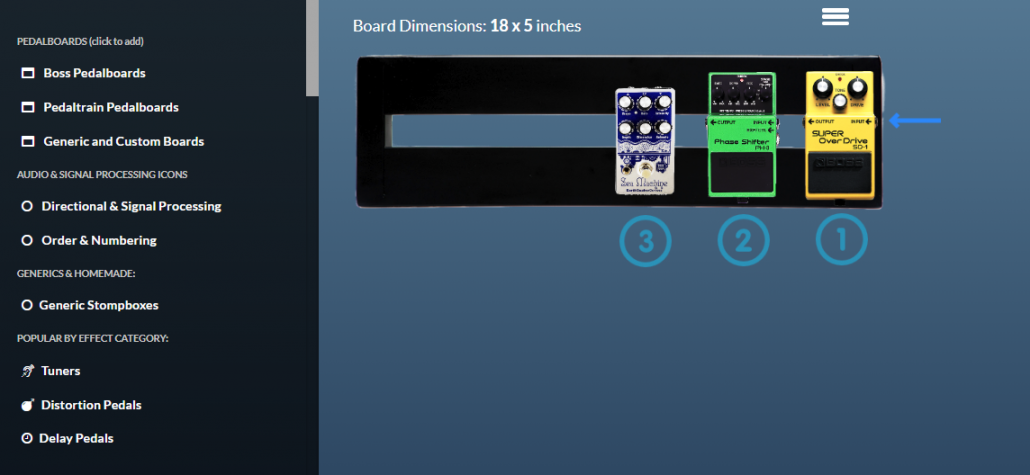
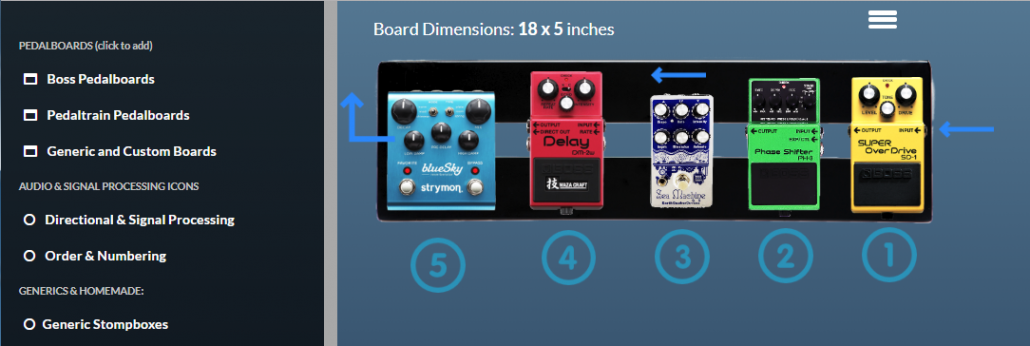

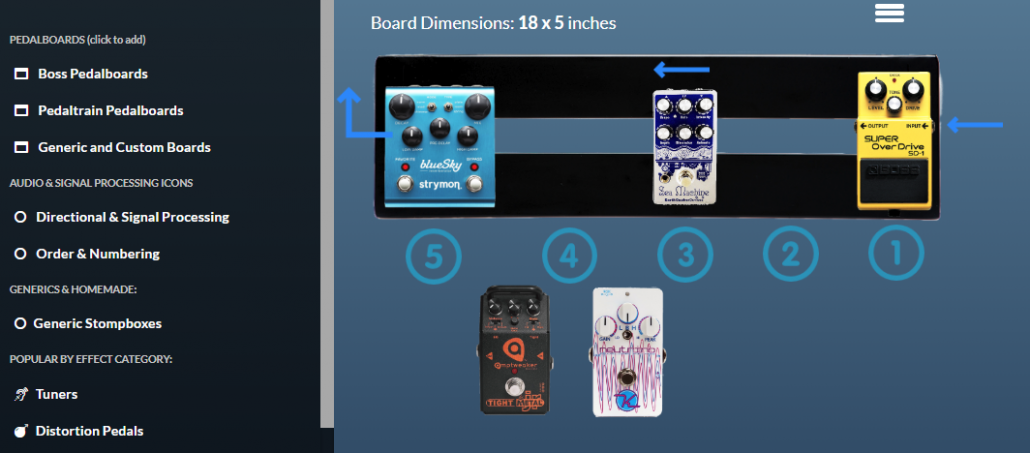
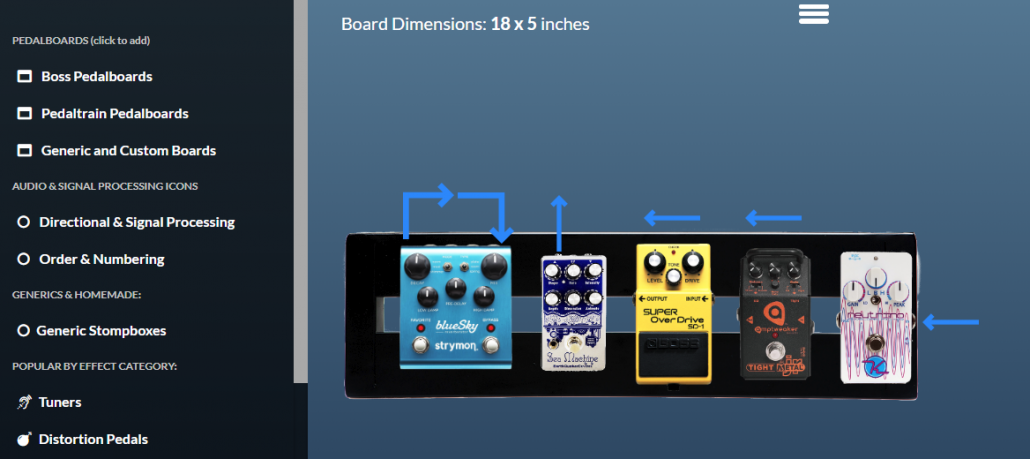
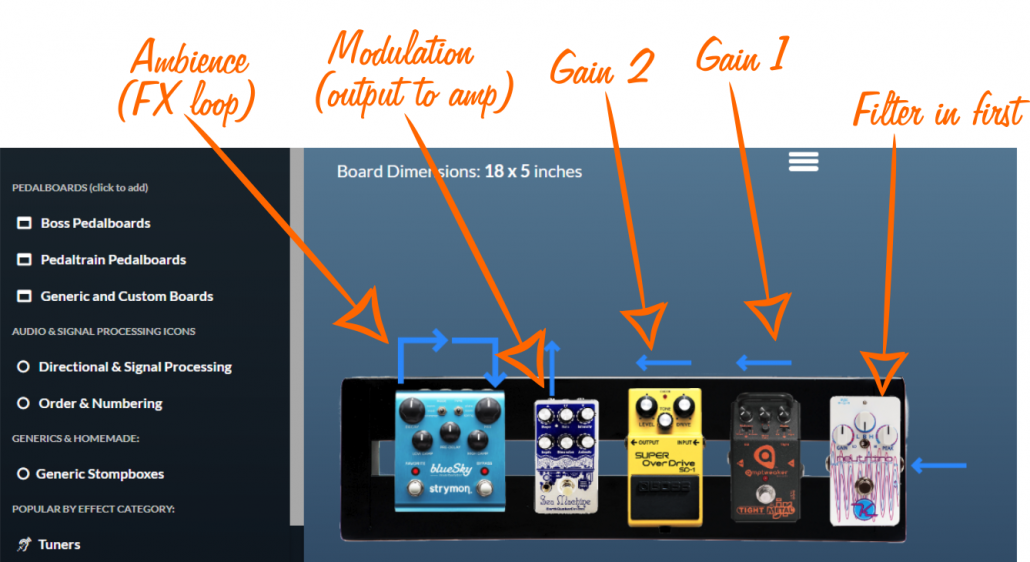

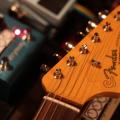
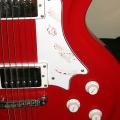
Leave a Reply